Telemundo focuses on the details with Paris Olympics virtual studio
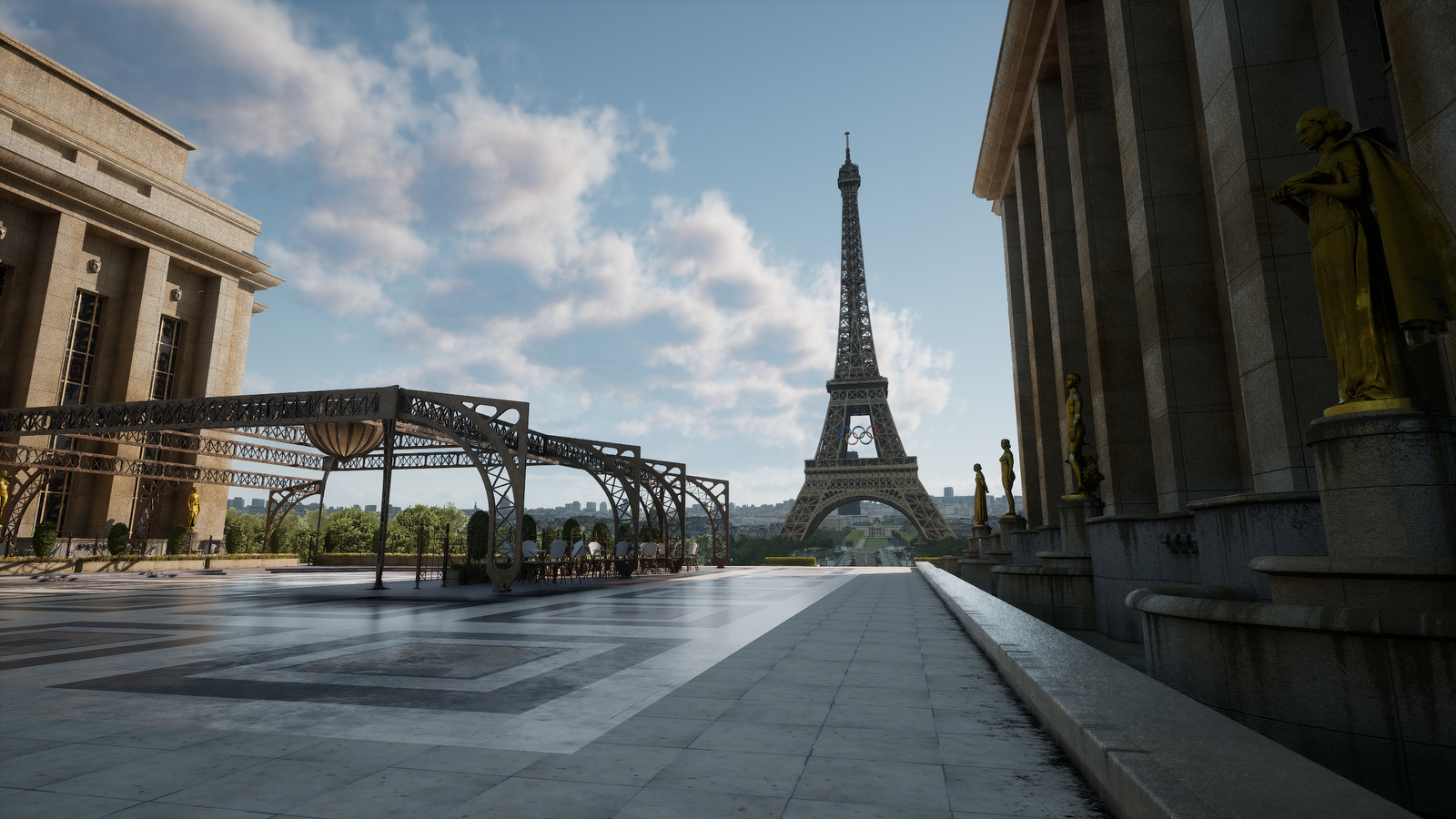
Subscribe to NCS for the latest news, project case studies and product announcements in broadcast technology, creative design and engineering delivered to your inbox.
When millions of viewers tuned in to Telemundo’s coverage of the 2024 Paris Olympics, they were transported to a stunning Parisian vista overlooking the Eiffel Tower. But the breathtaking set wasn’t constructed in France — it was created by blending photorealistic models with real-time rendering from the network’s studios in Miami.
“We’re able to put our talent in Paris with a beautiful skyline that can change time of day, that can be fine-tuned and that has this feeling of being there without sending seven containers of equipment and materials,” said Wally Rodriguez, VP, post production and visual FX, Telemundo.
Building on lessons learned from previous Olympics and World Cup broadcasts, Telemundo’s virtual studio for Paris 2024 delivered an impressive and flexible environment without the logistical challenges and costs associated with building and shipping physical sets. From moving cars and swaying trees to virtual sculptures crafted by real artists, every detail was meticulously designed to immerse viewers in the Olympic experience.
“The basic driver of a lot of these things is economics, right? We were sending a lot of people to cover the Olympics. Sending people, sets, all kinds of equipment, et cetera, et cetera. And in some cases, it was beautiful, and in others, it wasn’t as pretty as we would have liked,” said Rodriguez.
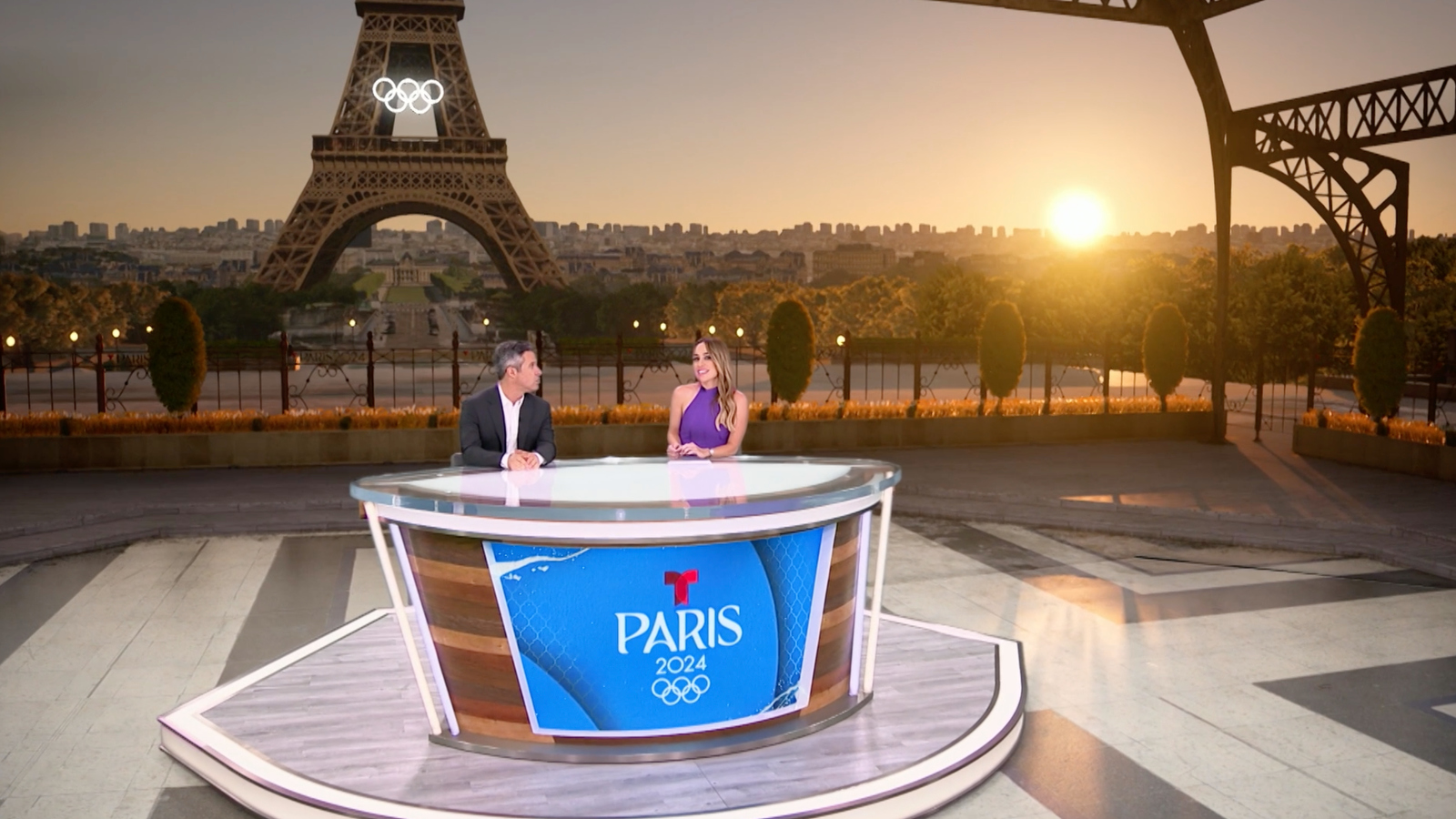
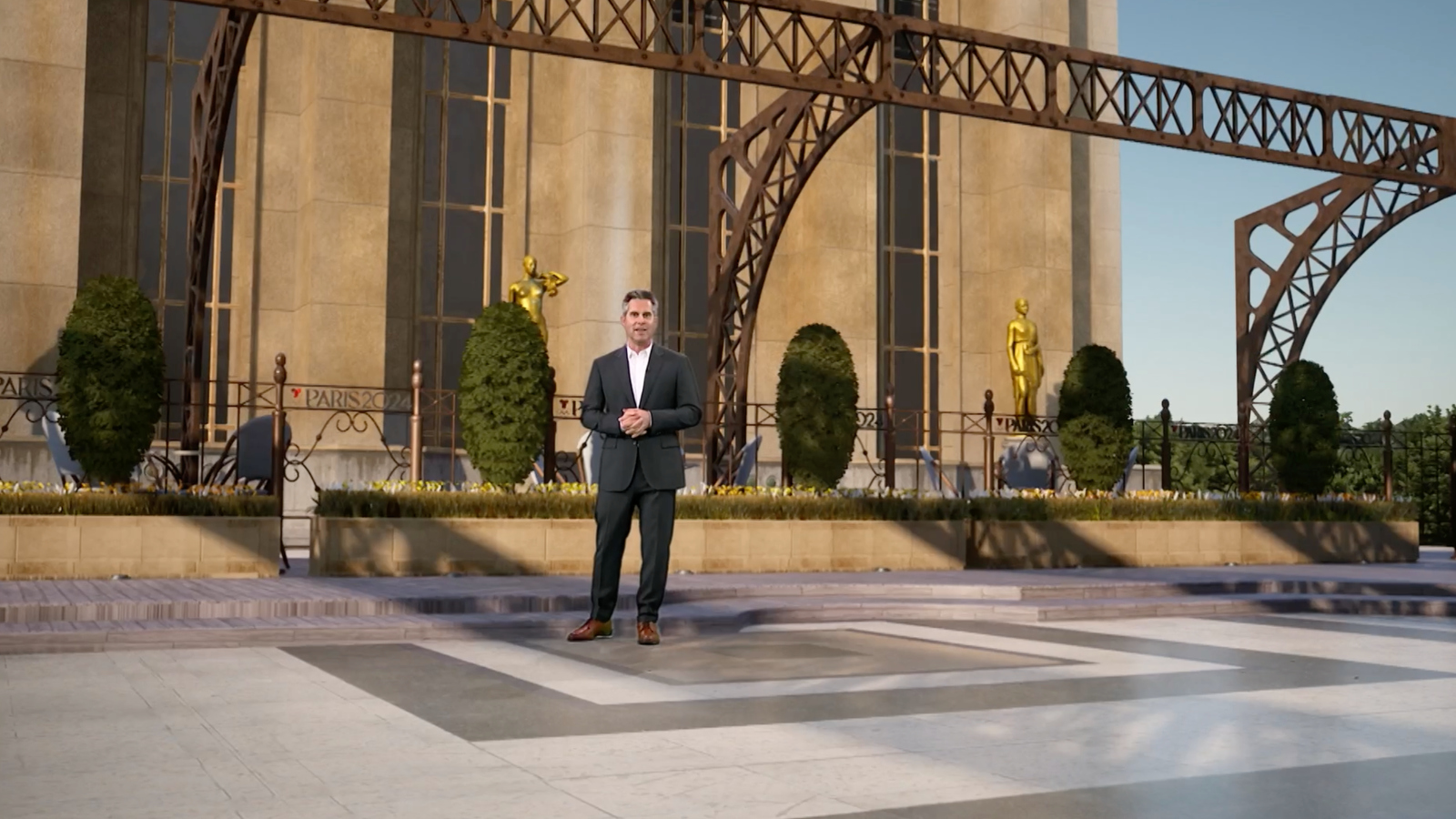
Virtual set design and implementation
The virtual set was broadcast from Studio L at Telemundo Center in Miami, using a large chromakey cyc that allowed talent to move around the virtual world.
Recreating a location near the Trocadéro Square in Paris, where many international broadcasters including NBC were stationed, the design team focused on creating a photorealistic environment with intricate details to enhance the sense of presence.

“If you come in and look at the detail, there are cars moving in the background, there’s wind with the trees, people in the Eiffel Tower walking around. They really went out of their way to look for every single little detail [to include in the virtual set],” said Manashi Mukherjee, VP, technical production, Telemundo.
To achieve this level of realism, the set fabrication and real-time graphics teams conducted extensive research on the Trocadéro area.
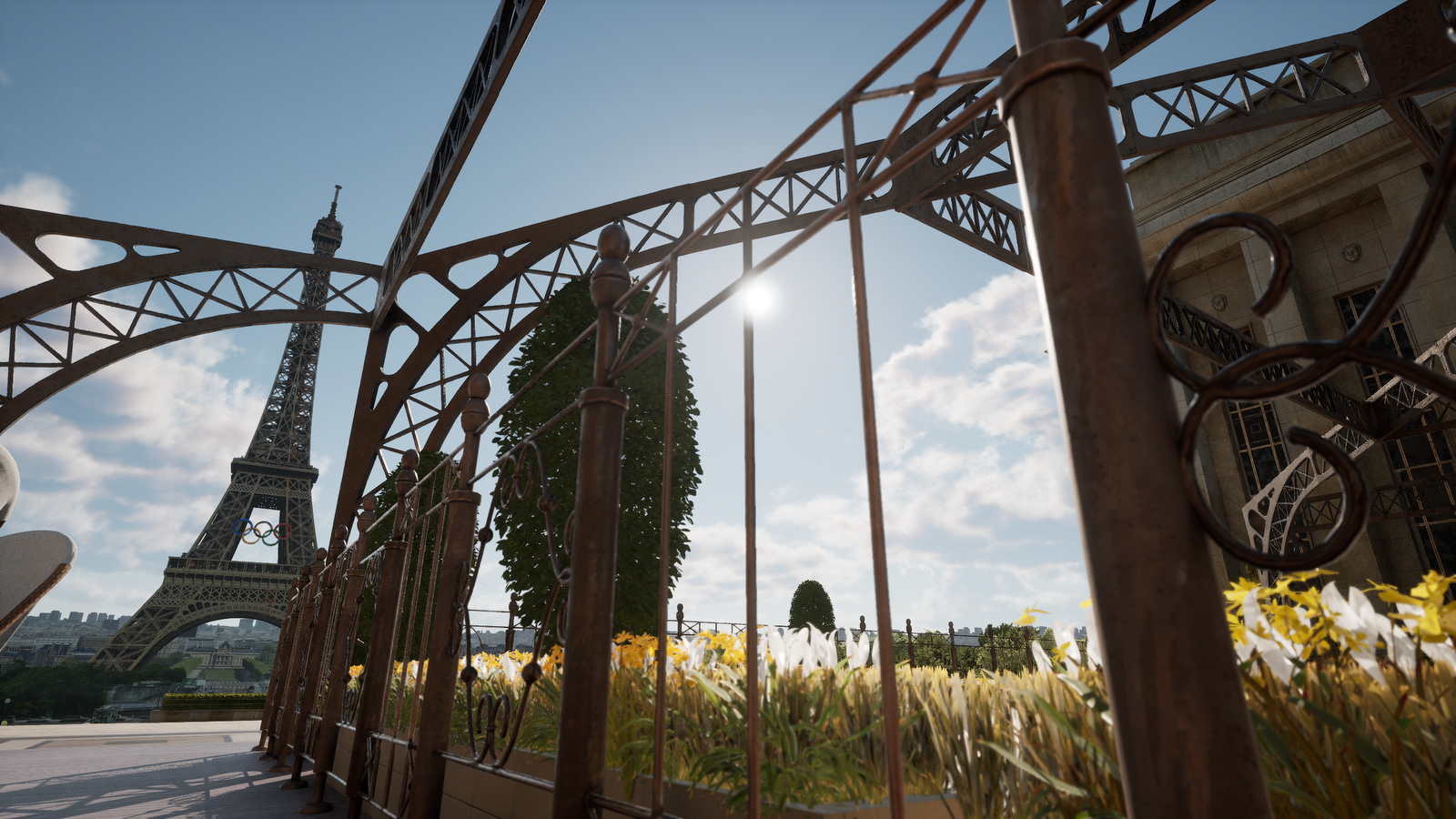
“They got into the very small details, finding photos of the area and what’s going on, what is the street, what is the map of the street look like there, so if we were on this part of the building next to NBC, what would the angle look like from our spot?” Mukherjee explained.
The set incorporated elements inspired by Parisian architecture and is framed by ironwork inspired by the Eiffel Tower. The team even brought in a professional artist to sculpt 3D models to add unique elements around the broadcast space.
“If you go into the studio and you zoom in on that, you can see the detail on the statue,” said Mukherjee, also noting that small details like weathering and reflects were accounted for in the model.
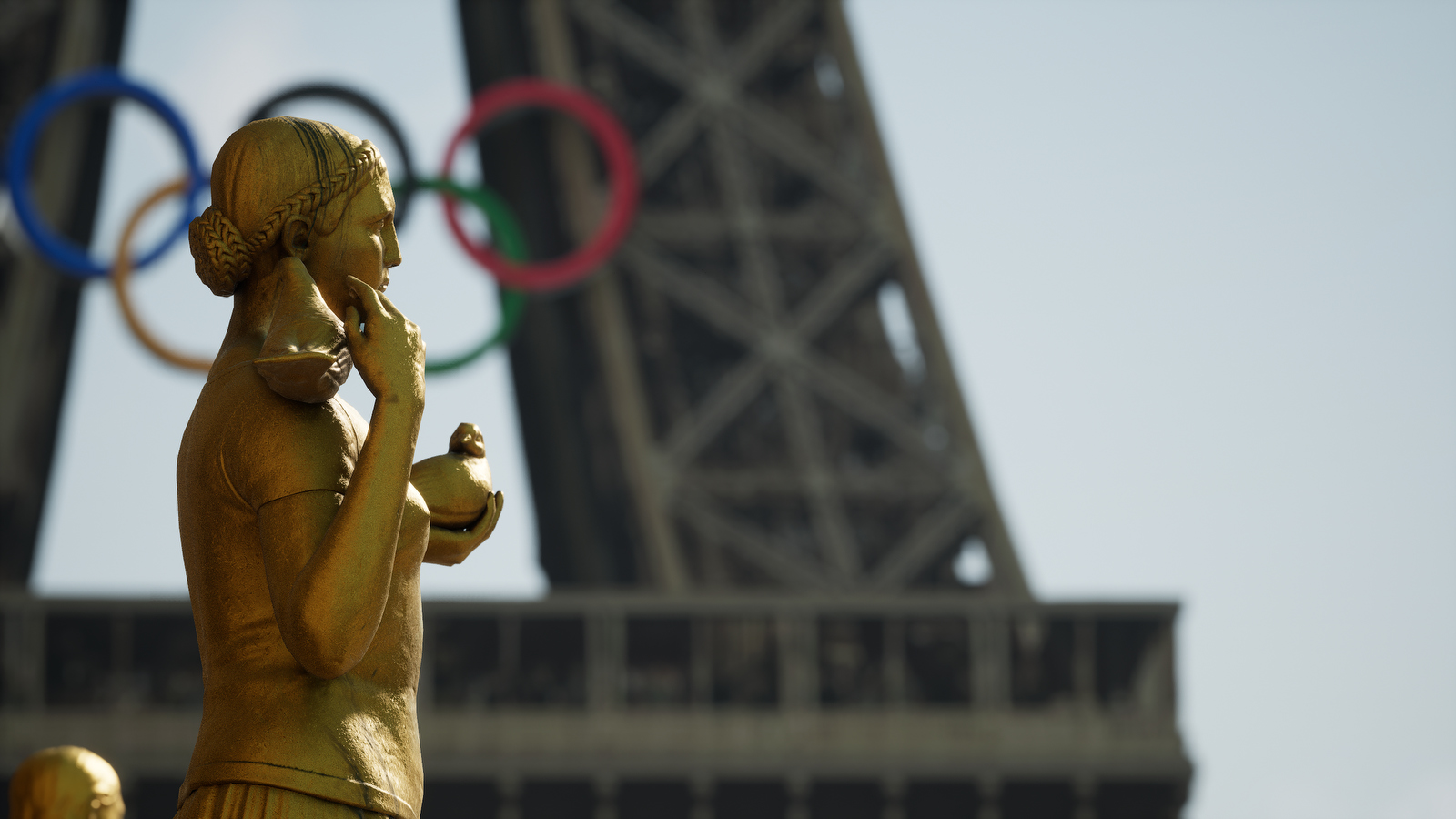
Technical infrastructure and real-time rendering
At the core of Telemundo’s virtual studio was Unreal Engine 5 from Epic Games, a real-time creation tool widely used in the gaming industry and increasingly adopted for broadcast applications. The Olympics set utilized four dedicated Unreal Engines, with eleven engines throughout Telemundo Center for various augmented reality and virtual applications.
Camera tracking was handled by a Stype RedSpy system with keying from Blackmagic Ultimatte.
“The tracking technology that we use allows us to have a multi-camera set up in the studio. So it really feels very realistic because the background moves with the camera,” Mukherjee explained.
Using one Unreal Engine per camera allowed for real-time compositing of the virtual elements with the live camera feeds. This alignment gave the talent the ability to see a real-time view of their surroundings on playback monitors in the studio to better interact with the space.
To achieve a more cinematic look, Telemundo implemented depth-of-field calculations into their virtual set.
“Early on around the Tokyo Olympics, we had Chyron implement depth-of-field calculations into the setup. So when we are on the air, we don’t have that sort of like flat look that you get in a lot of virtual sets because everything’s in focus,” Rodriguez explained.
This feature added a layer of realism to the virtual environment, mimicking the optical characteristics of physical cameras and lenses.


“That makes the images look more high-end. It looks more cinematic because that’s how cinema cameras behave,” Rodriguez added.
Performance optimization was also a key focus for the team, with particular attention paid to asset creation and management. By keeping the entire process in-house, from design to implementation, the team ensured that the virtual elements were optimized for real-time rendering inside Unreal.
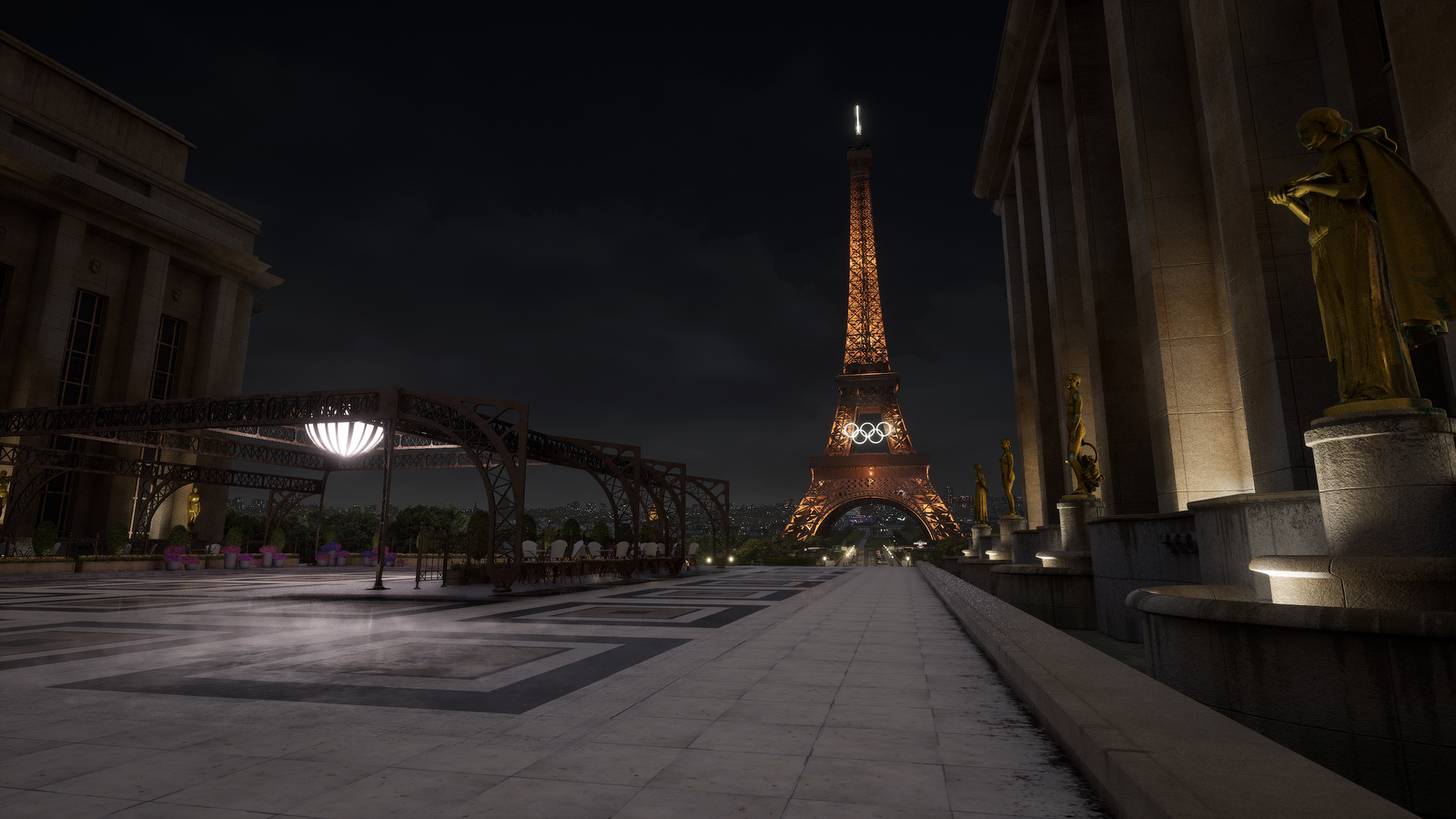
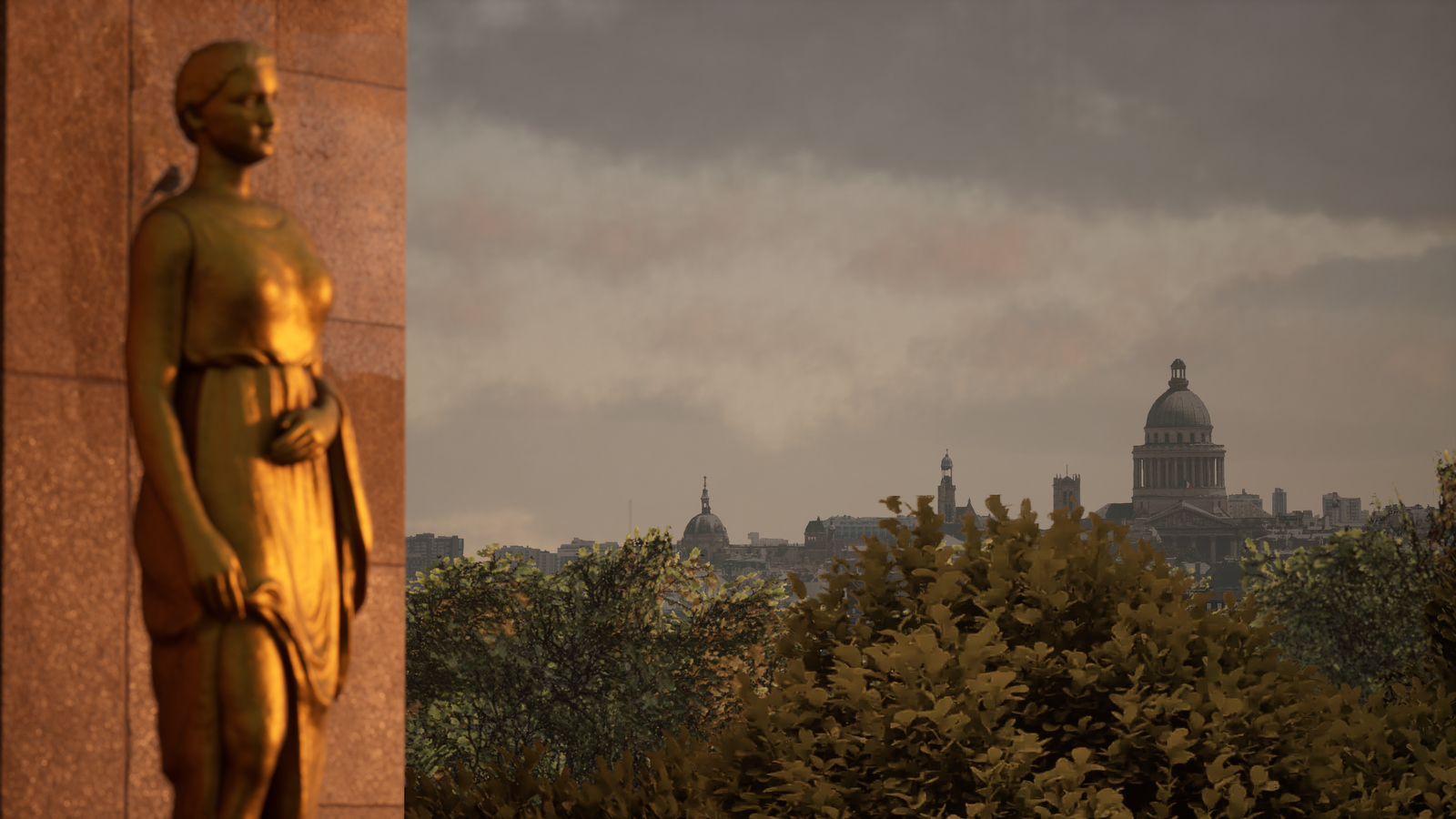
“The performance management for Unreal is quite extensive. And that is very hard to achieve when you’re getting your models from a third party. So we could build performance enhancement directly or performance measurements and sort of like plan for performance right from the modeling stage,” Rodriguez explained.
“3D people are like simulators, whereas compositing people are samplers. 3D animators, they wanna model the last little screw, whereas compositors just grab a nice texture of a screw and slap it onto it. So there’s a very interesting mix of performance management happening in the background that is only possible, in my opinion, when the team that’s creating the assets is very tight with the team that’s actually gonna play them back,” said Rodriguez.
Graphics integration and production workflow with Chyron
Telemundo utilized Chyron Prime VSAR with the Unreal Engine to bring the set to air, allowing the seamless incorporation of broadcast graphics into the virtual environment.
“The team here has worked for a long time on building dashboards that you can use to enter all the data and trigger graphics on-air… it shields the producers from all the technology part,” Rodriguez explained.
This approach simplified the production team’s workflow, allowing them to focus on content creation rather than technical intricacies. The system provided pre-composited images for each camera, viewable by operators and talent, which enhanced the real-time interaction with the virtual set throughout the coverage.
Sustainability, flexibility and future applications
Multiple factors drove the adoption of virtual studio technology for the Olympics, including cost savings and sustainability. Telemundo significantly reduced the logistical challenges associated with large-scale event coverage by eliminating the need for physical set construction, shipping and storage.
The virtual environment also provided unprecedented flexibility.
Mukherjee explained, “We had flowers on the set that looked weird on camera when the perspective wasn’t changing. Our graphics team just drew them into the virtual set in a matter of hours.” This ability to make real-time adjustments allowed the production team to respond quickly to changing needs throughout the Olympic period, unburdened by the constraints of physical construction.
The success of the virtual studio implementation stemmed from close collaboration between various in-house teams.
“Our whole team is in-house. The designers, the implementers, and the operators who play this stuff back during the show,” Mukherjee noted. This integrated approach, which extended to the sports team, ensured that the virtual environment met the specific needs of Olympics coverage.
Looking to the future, Telemundo is already exploring new applications for this technology.
“Our leadership is really keen on letting us try new ideas and test out things,” Mukherjee said. “It’s a really cool synergy, because we can test things, see what works, what doesn’t work, and then advise around to our partners at MSNBC, CNBC, NBC.”
This forward-thinking approach suggests that virtual studio technology will become increasingly important in sports and news coverage, with Telemundo aiming to be at the forefront.
Project Credits
VP, Technical Production, Telemundo
Manashi Mukherjee
VP, Post Production and Visual FX, Telemundo
Wally Rodriguez
Director, Real Time Graphics, Telemundo
Fabián Albarracín
Technical Artist
Osmany Gómez
Edward Tejeiro
Jose Cruz
Carlos Rivero
Real-time Specialist
Alberto Franca
Diego Soto
Real-time Programmer
Manuel Romero
Subscribe to NCS for the latest news, project case studies and product announcements in broadcast technology, creative design and engineering delivered to your inbox.



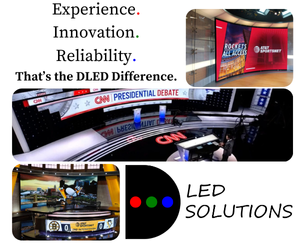

tags
2024 Summer Olympics, Blackmagic Design, chyron, Chyron Prime VSAR, Epic Games Unreal Engine, Manashi Mukherjee, Stype, Stype RedSpy, telemundo, Telemundo Deportes, Wally Rodriguez
categories
Augmented Reality, Virtual Production and Virtual Sets, Heroes, Olympics, Sports Broadcasting & Production, Virtual Sets